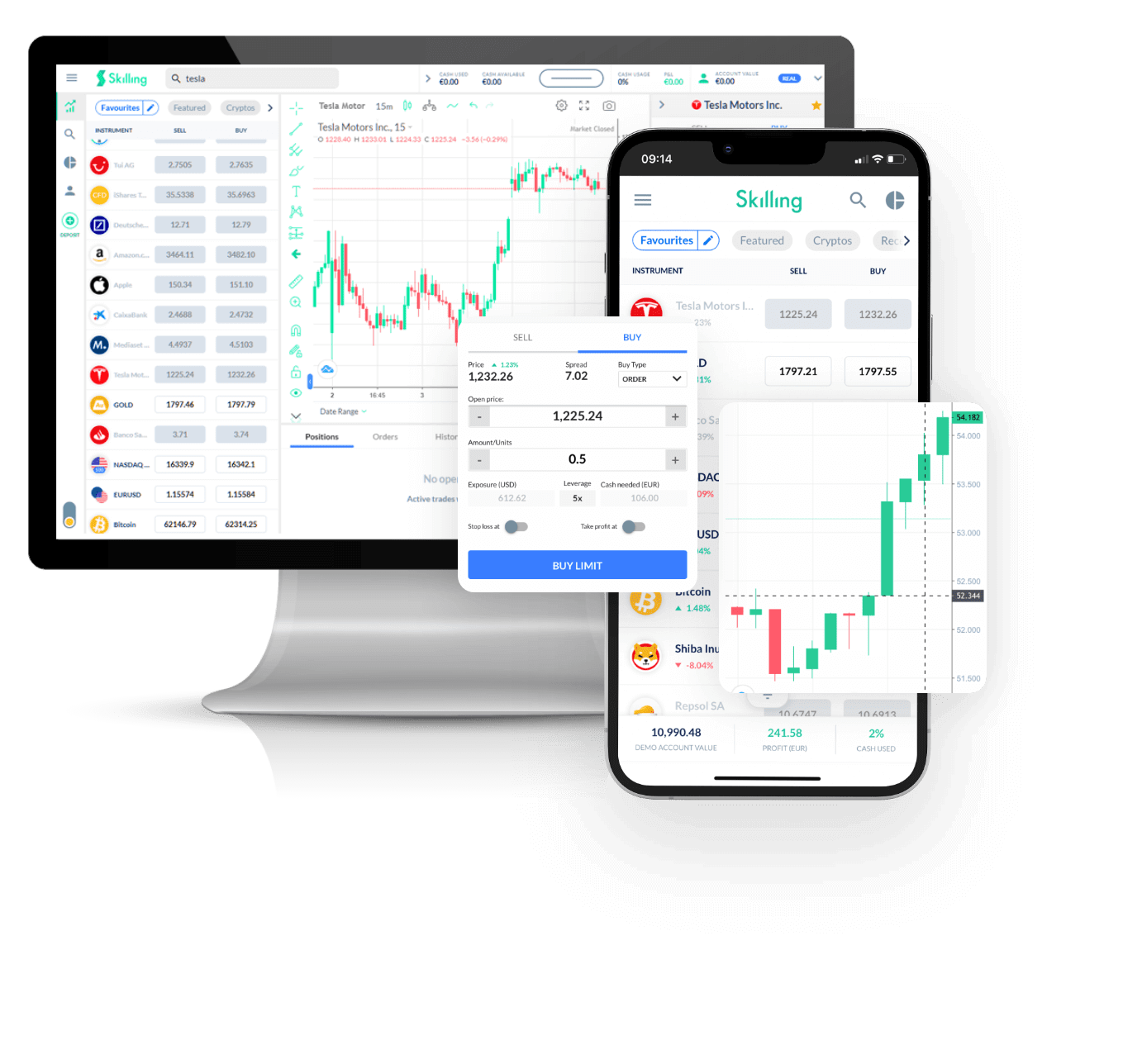Loading...
Trade [[data.name]]
[[ data.name ]]
[[ data.ticker ]]
[[ data.price ]] [[ data.change ]] ([[ data.changePercent ]]%)
Low: [[ data.low ]]
High: [[ data.high ]]
About
History
Competitors
About
History
Competitors
Puma, known in the corporate world as Puma SE, is a multinational sports apparel, footwear and equipment brand. The company’s roots connect it to another popular sportswear brand, Adidas. Rudolf and Adolf "Adi" Dassler created Gebrüder Dassler Schuhfabrik, otherwise known as the Dassler Brothers Shoe Factory in 1924.
Their relationship deteriorated over the next two decades and, in 1948, they split. Part of the agreement to part ways was that each brother would spin a new company out of Gebrüder Dassler Schuhfabrik. Those two companies were Ruda (created by Rudolf) and Adidas (created by Adi).
Ruda became Puma a few months after its inception and, with that, a new rivalry in the sportswear and equipment market was born. Today, Puma designs and manufactures footwear, clothing, accessories and sports equipment. Through a combination of marketing and sponsorship deals with athletes and teams, including Usain Bolt, Puma is popular in over 120 countries.
Puma stock has been publicly available since 1986. Puma shares (DE: PUM) were listed on the Börse München and Frankfurt Stock Exchange following the IPO. Armin and Gerd Dassler, the sons of Rudolf, sold their 72% stake in Puma three years after the IPO in 1989. The sale to Cosa Liebermann SA helped Puma achieve its first profit in 1994, eight years after its IPO.
The Puma share price remained less than €10 until 2003. Since then, Puma stock has achieved an average value of more than €20. Another notable moment within the Puma share price history is a split. The 1:10 split took place on June 10, 2019, and the Puma share price has been adjusted to reflect this.
Why trade Puma stock when there are other options? Puma had a revenue of €6.8 billion in 2021, making it one of the largest sports brands in the world. The company’s largest shareholder is Kering. The French luxury goods company owns 9.8% of Puma’s shares.
By these measures, Puma stock is often of interest to traders. However, there are bigger sports brands out there. Nike and Adidas both generate more revenue than Puma. On an international level, these companies have a larger profile. The caveat to this is that the share prices of Nike and Adidas are higher than Puma’s. This is something to consider when you’re trading shares at Skilling.
| Swap long | [[ data.swapLong ]] points |
|---|---|
| Swap short | [[ data.swapShort ]] points |
| Spread min | [[ data.stats.minSpread ]] |
| Spread avg | [[ data.stats.avgSpread ]] |
| Min contract size | [[ data.minVolume ]] |
| Min step size | [[ data.stepVolume ]] |
| Commission and Swap | Commission and Swap |
| Leverage | Leverage |
| Trading Hours | Trading Hours |
* The spreads provided are a reflection of the time-weighted average. Though Skilling attempts to provide competitive spreads during all trading hours, clients should note that these may vary and are susceptible to underlying market conditions. The above is provided for indicative purposes only. Clients are advised to check important news announcements on our Economic Calendar, which may result in the widening of spreads, amongst other instances.
The above spreads are applicable under normal trading conditions. Skilling has the right to amend the above spreads according to market conditions as per the 'Terms and Conditions'.

Trade [[data.name]] with Skilling
All Hassle-free, with flexible trade sizes and with zero commissions!*
- Trade 24/5
- Minimum margin requirements
- No commission, only spread
- Fractional shares available
- Easy to use platform
*Other fees may apply.
FAQs
What are the key drivers affecting Puma's stock price?
+ -Puma's stock price is affected by a variety of factors, including economic conditions, competitive landscape, industry trends and the company's performance. Economic conditions such as GDP growth, inflation and interest rates can all have an impact on Puma's stock price. Additionally, changes in the competitive landscape can also affect the company's stock price. Industry trends can also have an impact on the company's stock price. Lastly, Puma's own performance can also play a major role in determining its stock price.
Who owns most Puma shares?
+ -The Pinault Francois family is the largest shareholder of Puma Holding SA, owning 42,825,240 shares and 28.4%. Kering SA owns 5,972,656 shares (3.96%), while Norges Bank Investment Management holds 4,546,409 shares (3.01%). Other significant shareholders include BlackRock Inc. (2.06%) and The Vanguard Group (1.76%) as well as various other institutional investors.
Do Puma shares pay dividends?
+ -The Puma share price does offer a modest dividend yield of 1.59%. This is well below the average dividend yield for stocks in the same industry, so it may not offer investors as much income as other investments. Furthermore, Puma's Price to Earnings (P/E) ratio is 22.05 which indicates that the company is trading at a premium relative to its peers. This may mean that investors are expecting greater growth from the company than is typical in the industry and hence they are willing to pay more for Puma's shares than other companies' shares in the same sector.
Why Trade [[data.name]]
Make the most of price fluctuations - no matter what direction the price swings and without capital restrictions that come with buying the underlying asset.
CFDs
Equities
Capitalise on rising prices (go long)
Capitalise on falling prices (go short)
Trade with leverage
Hold larger positions than the cash you have at your disposal
Trade on volatility
No need to own the asset
No commissions
Just low spreads
Manage risk with in-platform tools
Ability to set take profit and stop loss levels

